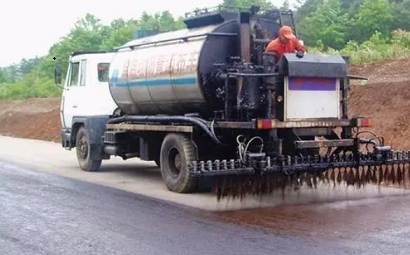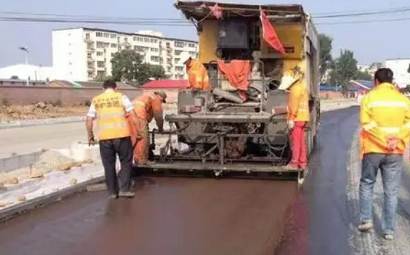The burners of asphalt mixing plants are divided into pressure atomization, medium atomization and rotary cup atomization according to the atomization method. Pressure atomization has the characteristics of uniform atomization, simple operation, less consumables, and low cost. At present, most road construction machinery adopts this atomization type.
Medium atomization refers to premixing with fuel and then burning it to the periphery of the nozzle through 5 to 8 kilograms of compressed air or pressurized steam pressure. It is characterized by low fuel requirements, but many consumables and high costs. At present, this type of machine is rarely used in the road construction machinery industry. Rotary cup atomization is where fuel is atomized by a high-speed rotating cup and disk. Can burn poor quality oil, such as high viscosity residual oil. However, the model is expensive, the rotor plate is easy to wear, and the debugging requirements are high. At present, this type of machine is basically not used in the road construction machinery industry.


According to the machine structure, the burners of asphalt mixing plants can be divided into integral gun type and split gun type. The integrated machine gun consists of a fan motor, oil pump, chassis and other control elements. It is characterized by small size and small adjustment ratio, generally 1:2.5. High-voltage electronic ignition systems are mostly used, which have lower costs, but have higher requirements on fuel quality and environment. This type of equipment can be used for equipment with a displacement of less than 120 tons/hour and diesel fuel.
The split machine gun divides the main engine, fan, oil pump unit and control components into four independent mechanisms. It is characterized by large size, high output power, gas ignition system, large adjustment, generally 1:4~1:6, or even as high as 1:10, low noise, and low requirements for fuel quality and environment.
 Albanian
Albanian  Russian
Russian  Arabic
Arabic  Amharic
Amharic  Azerbaijani
Azerbaijani  Irish
Irish  Estonian
Estonian  Odia (Oriya)
Odia (Oriya)  Basque
Basque  Belarusian
Belarusian  Bulgarian
Bulgarian  Icelandic
Icelandic  Polish
Polish  Bosnian
Bosnian  Persian
Persian  Afrikaans
Afrikaans  Tatar
Tatar  Danish
Danish  German
German  French
French  Filipino
Filipino  Finnish
Finnish  Frisian
Frisian  Khmer
Khmer  Georgian
Georgian  Gujarati
Gujarati  Kazakh
Kazakh  Haitian Creole
Haitian Creole  Korean
Korean  Hausa
Hausa  Dutch
Dutch  Kyrgyz
Kyrgyz  Galician
Galician  Catalan
Catalan  Czech
Czech  Kannada
Kannada  Corsican
Corsican  Croatian
Croatian  Kurdish (Kurmanji)
Kurdish (Kurmanji)  Latin
Latin  Latvian
Latvian  Lao
Lao  Lithuanian
Lithuanian  Luxembourgish
Luxembourgish  Kinyarwanda
Kinyarwanda  Romanian
Romanian  Malagasy
Malagasy  Maltese
Maltese  Marathi
Marathi  Malayalam
Malayalam  Malay
Malay  Macedonian
Macedonian  Maori
Maori  Mongolian
Mongolian  Bengali
Bengali  Myanmar (Burmese)
Myanmar (Burmese)  Hmong
Hmong  Xhosa
Xhosa  Zulu
Zulu  Nepali
Nepali  Norwegian
Norwegian  Punjabi
Punjabi  Portuguese
Portuguese  Pashto
Pashto  Chichewa
Chichewa  Japanese
Japanese  Swedish
Swedish  Samoan
Samoan  Serbian
Serbian  Sesotho
Sesotho  Sinhala
Sinhala  Esperanto
Esperanto  Slovak
Slovak  Slovenian
Slovenian  Swahili
Swahili  Scots Gaelic
Scots Gaelic  Cebuano
Cebuano  Somali
Somali  Tajik
Tajik  Telugu
Telugu  Tamil
Tamil  Thai
Thai  Turkish
Turkish  Turkmen
Turkmen  Welsh
Welsh  Uyghur
Uyghur  Urdu
Urdu  Ukrainian
Ukrainian  Uzbek
Uzbek  Spanish
Spanish  Hebrew
Hebrew  Greek
Greek  Hawaiian
Hawaiian  Sindhi
Sindhi  Hungarian
Hungarian  Shona
Shona  Armenian
Armenian  Igbo
Igbo  Italian
Italian  Yiddish
Yiddish  Hindi
Hindi  Sundanese
Sundanese  Indonesian
Indonesian  Javanese
Javanese  Yoruba
Yoruba  Vietnamese
Vietnamese  Hebrew
Hebrew  Chinese (Simplified)
Chinese (Simplified)







